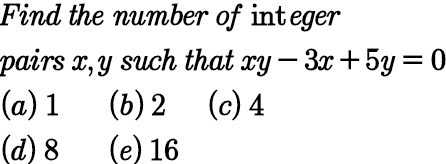
AllQuestion and Answers: Page 1201
Question Number 96500 Answers: 2 Comments: 0
Question Number 96495 Answers: 2 Comments: 0
Question Number 96489 Answers: 1 Comments: 0
Question Number 96481 Answers: 0 Comments: 5
Question Number 96479 Answers: 1 Comments: 0
Question Number 96467 Answers: 1 Comments: 0
Question Number 96466 Answers: 0 Comments: 0

Question Number 96460 Answers: 1 Comments: 8

Question Number 96454 Answers: 1 Comments: 0

Question Number 96441 Answers: 1 Comments: 1

Question Number 96437 Answers: 1 Comments: 0

Question Number 96436 Answers: 0 Comments: 0
Question Number 96429 Answers: 1 Comments: 0

Question Number 96428 Answers: 2 Comments: 0

Question Number 96427 Answers: 0 Comments: 0

Question Number 96419 Answers: 5 Comments: 3

Question Number 96410 Answers: 0 Comments: 4

Question Number 96407 Answers: 1 Comments: 4

Question Number 96397 Answers: 1 Comments: 0
Question Number 96394 Answers: 0 Comments: 0
Question Number 96392 Answers: 1 Comments: 0
Question Number 96383 Answers: 1 Comments: 0
Question Number 96377 Answers: 1 Comments: 0
Question Number 96375 Answers: 2 Comments: 0
Question Number 96373 Answers: 2 Comments: 0
Question Number 96365 Answers: 2 Comments: 0

Pg 1196 Pg 1197 Pg 1198 Pg 1199 Pg 1200 Pg 1201 Pg 1202 Pg 1203 Pg 1204 Pg 1205
